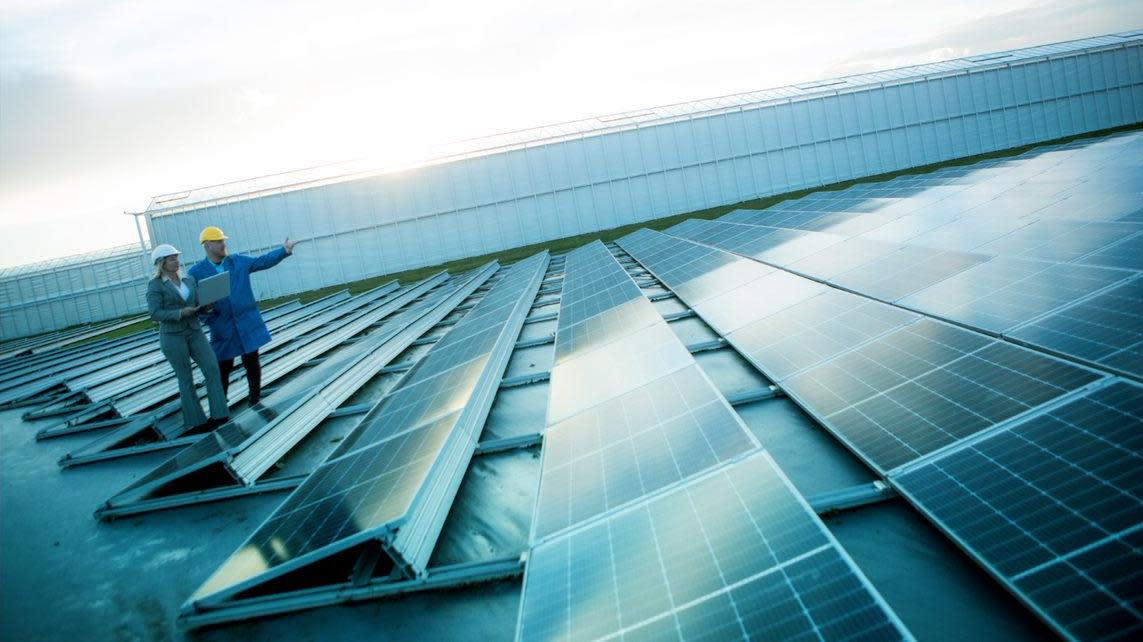2030 climate target within reach for many sectors in the Netherlands

- Sustainability
For the Netherlands, closing the emissions gap over the next few years is by no means unachievable. Indeed, for many sectors, the Dutch climate targets are actually within reach. Implementing existing low-carbon technologies and other carbon-free measures will help companies make significant headway towards achieving the 2030 climate targets and climate neutrality in 2050. Today, ABN AMRO is publishing these findings and more in a report titled '2030 climate goals within reach with existing carbon tech'. The report offers companies across various sectors some practical advice on how to reduce greenhouse gas emissions, and explains how to create a strategy for the route to net zero emissions.
Over 80 percent of all Dutch greenhouse gas emissions are produced by businesses. That's why reducing these emissions across all sectors is the key to achieving the Dutch climate goals, says Casper Burgering, Senior Economist Sustainability Research at ABN AMRO. "Our analysis reveals that reaching climate neutrality by 2050 is a major challenge in most sectors. The transition is slowed by multiple factors like the limited capacity and slow expansion of the power grid and the lack of qualified staff, policies and financing. But once we've tackled those obstacles, we can all profit from the massive reduction potential of our existing low-carbon technologies."
One major obstacle is that many of these technologies require large investments. "Not only in the technology, but also in the related infrastructure. For example, some large investments are still needed to arrange good, solid connections to the power grid. The government could help make this happen with its policy-making powers, so that investing in emission reduction becomes the most cost-effective strategy for these companies."
Low-hanging fruit: existing technology already offers great opportunities
Many companies are only just getting started on reducing energy consumption and decarbonising their primary processes. "However, the low-carbon technologies we already have can help companies to achieve great results in the short term. What you’d call low-hanging fruit," Burgering explains. Quite a few industrial companies could make real strides this way — but there are huge differences between sectors. Certain industrial sectors, like construction materials, paper, chemicals, and electrical engineering, are well on their way to hitting their climate targets. But in highly energy-intensive industries, such as food, oil and base metal, change isn't so easily facilitated. For them, greenhouse gas emissions are falling only slowly. Meanwhile, many sectors outside industry are facing great difficulties to even get started, like the transport sectors, or water and waste management. Companies in these fields are less committed to applying disruptive technologies to reduce greenhouse gas emissions. This is partly due to a lack of resources, and in some cases government policies are untransparent or not so strict.
The time for major strides is now, and it's urgent
Sandra Phlippen, Chief Economist at ABN AMRO, emphasises that for SMEs in particular, the urgency is greater than it might seem. While the big emitters are already busy decarbonising because of the Emissions Trading Scheme (EU ETS), SMEs could be left behind and then run out of time. Decarbonising may be hard, but doing so under time pressure could be a real problem. And even if the new government doesn’t impose regulations on SMEs, they still run the risk of becoming unattractive suppliers to major customers who are carbon neutral."
Phlippen continues: "This study will help SMEs make the transition by showing them in practical terms how to decarbonise. With the current technology, these companies can pick up the pace on their reduction goals. But they should pour their focus and their investments into the technologies with the biggest impact. It’s important for the business world to leverage these available technological innovations across the board, as that will bring climate goals within reach and result in future-proof Dutch SMEs."
The new ABN AMRO report shows the potential impact of currently available carbon-free technologies on greenhouse gas emissions per sector. In the report, the current situation and trends in greenhouse gas emissions in the Netherlands are explained and elaborated on, and business owners can find actionable insight into the milestones they need to realise. The challenges and obstacles of the energy transition are highlighted. Furthermore, the report identifies which Dutch sectors face the greatest challenges to meet the 2030 and 2050 targets. This is based on an in-depth sector analysis, which discusses the impact of low-carbon technologies in more detail for 21 key sectors in the Dutch economy.
